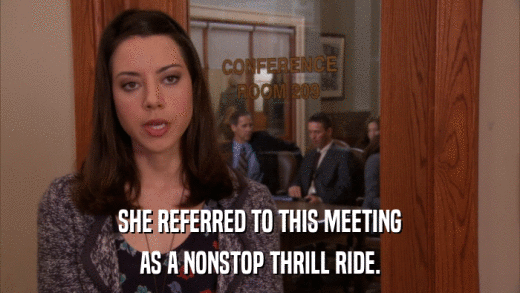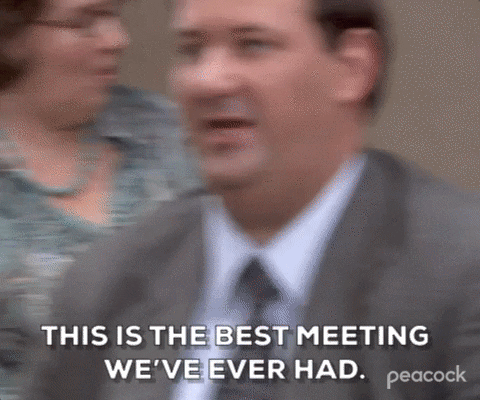Unions are a group of people working collectively towards a solution. Whether in-person or virtual, it’s important to know how to facilitate effective meetings so that you can keep your organizing campaign moving forward.
Preparation
Ideally, each meeting should have a designated facilitator and notetaker. At the very least, make sure that you know the main goals of the meeting so that you can shape the agenda accordingly. Early meetings may focus primarily on reaching out to co-workers and mapping your workplace while later in the campaign you may discuss when and how to go public.
Draft and circulate the agenda in advance, if appropriate (if it’s a large meeting you might not want to put too much strategic information in case someone forwards to management). Communicate meeting logistics ahead of time (location and/or Zoom link, do they need to RSVP, etc), as well as the start and end time.
Sample Agenda
- Date, time, location/call-in info
- Introductions (Name, pronoun, dept/team)
- Issues (What do people want to change by organizing? What are some of the biggest challenges people are having in the workplace?)
- How organizing can address people’s workplace issues (Examples from other contracts, past management decisions that demonstrate a need for collective power)
- Overview of the organizing process (this is where it's helpful to have an experienced organizer in the meeting)
- Next steps
Facilitating the meeting
The facilitator’s job is to move participants through the agenda. Let people know at the top that you’re facilitating and how people should participate (in Zoom it might mean using the raise hand button or putting a question in chat), in-person you may ask people to raise hands. You can also let people know to just chime in and if there is a lot of discussion, someone will “take stack” (a list of people who want to talk who are then called on in order by the facilitator).
To get started, go around the group and ask everyone to introduce themselves. It may be the first time people are meeting co-workers from other departments or teams, so consider doing an “icebreaker” as part of the introductions. Something super simple like “what’s your favorite thing about spring?” can help set the tone that everyone is welcome and encouraged to participate. People groan about them but a simple personal question can get people talking and maybe even laughing!

When you're meeting early on in the organizing process, you'll want to go around the group again and get people talking about their workplace issues. What do you want to change through organizing? What are some of your biggest challenges at work? If the meeting is in person, the notetaker might use a flipchart to take notes while people talk; for virtual meetings, a shared google doc or slide works great. Themes will start to emerge as people share their workplace issues, which creates momentum for organizing and helps people see that they're not alone.
One of the most important, and challenging, tasks of a facilitator is getting people engaged in discussion while also keeping them on track. We’ve all been in meetings overly dominated by one person or issue and it’s...not fun or productive. It’s important to honor people’s stories while also being ready to gently interrupt or redirect people back to the goals and the meeting time. Something like, “That sounds really stressful and we should talk more about that. Can we put it on the agenda for another meeting in case other people are having this issue? We’ve got about 20 minutes left and we want to make sure we have a plan to reach every department by next week.”
Mind the time! Your meeting might run a little late but it’s important to respect people’s time and energy, they’re not going to keep showing up if every meeting runs long.
Participating in a meeting
Every meeting is an opportunity to make your union stronger. Is there anyone here who you don’t recognize? Introduce yourself and welcome them (whether or not you are a facilitator). As a participant in a union meeting, you should try not to interrupt your colleagues or derail the agenda. These are your fellow members and you need to be able to trust each other and work together.

Making a decision
Some groups may decide to vote on crucial decisions, while others prefer to use a loose consensus approach. No matter what, it is important not to assume that there is consensus just because everyone seems to be in agreement.
If people are starting to repeat themselves or talk in circles, you can nudge people towards decision-making with something like, “It sounds like we’re in agreement on XYZ, let’s go around the room and make sure that everyone is on board.” Each person can weigh in with something like, “I support”, “I’m not sure”, and “I oppose this”, as well as a simple “Pass”. This can also work to get a temperature check on how people are feeling about an idea or action.
You can also use visual cues, like a thumbs up to show support (with your actual thumb or as an emoji for virtual meetings).
Follow-through
Confirm next steps and who is doing what before the meeting ends. Be specific! “Megan is going to reach out to two people in her department and will report back by Friday” is much more effective than “everyone’s gonna talk to someone” and then scrambling after the meeting to figure out who is doing what, and when. Then it’s time for the next meeting!




